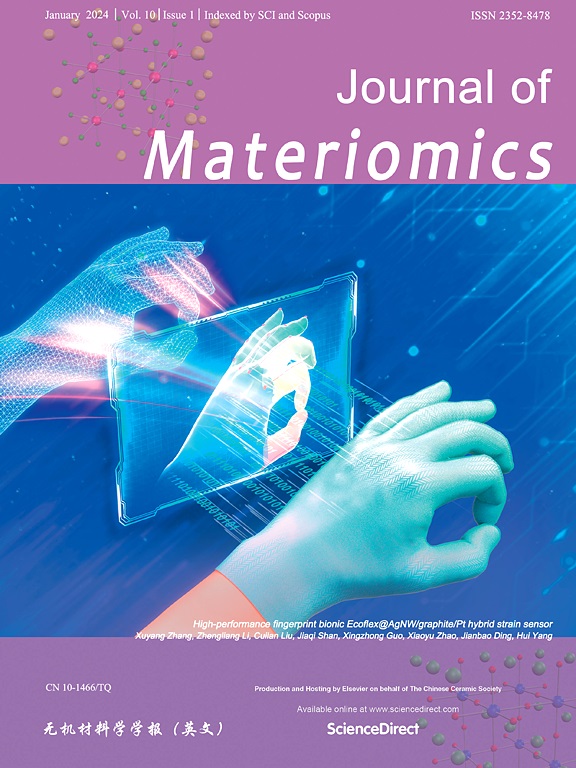Machine learning assisted Q×f value prediction of ABO4-type microwave dielectric ceramics
IF 8.4
1区 材料科学
Q1 CHEMISTRY, PHYSICAL
引用次数: 0
Abstract
Microwave dielectric ceramics (MWDCs) with a high Q×f value can improve the performance of radio frequency components like resonators, filters, antennas and so on. However, the quantitative structure-property relationship (QSPR) for the Q×f value is complicated and unclear. In this study, machine learning methods were used to explore the QSPR and build up Q×f value prediction model based on a dataset of 164 ABO4-type MWDCs. We employed five commonly-used algorithms for modeling, and 35 structural features having correlations with Q×f value were used as input. In order to describe structure from both global and local perspectives, three different feature construction methods were compared. The optimal model based on support vector regression with radial basis function kernel shows good performances and generalization capability. The features contained in the optimal model are primitive cell volume, molecular dielectric polarizability and electronegativity with A- and B-site mean method. The relationships between property and structure were discussed. The model used for the Q×f value prediction of tetragonal scheelite shows excellent performances (R2 = 0.8115 and RMSE = 8362.73 GHz), but it needs auxiliary features of average bond length, theoretical density and polarizability per unit volume for monoclinic wolframite ceramics to improve model prediction ability.

求助全文
约1分钟内获得全文
求助全文
来源期刊

Journal of Materiomics
Materials Science-Metals and Alloys
CiteScore
14.30
自引率
6.40%
发文量
331
审稿时长
37 days
期刊介绍:
The Journal of Materiomics is a peer-reviewed open-access journal that aims to serve as a forum for the continuous dissemination of research within the field of materials science. It particularly emphasizes systematic studies on the relationships between composition, processing, structure, property, and performance of advanced materials. The journal is supported by the Chinese Ceramic Society and is indexed in SCIE and Scopus. It is commonly referred to as J Materiomics.
 求助内容:
求助内容: 应助结果提醒方式:
应助结果提醒方式:


